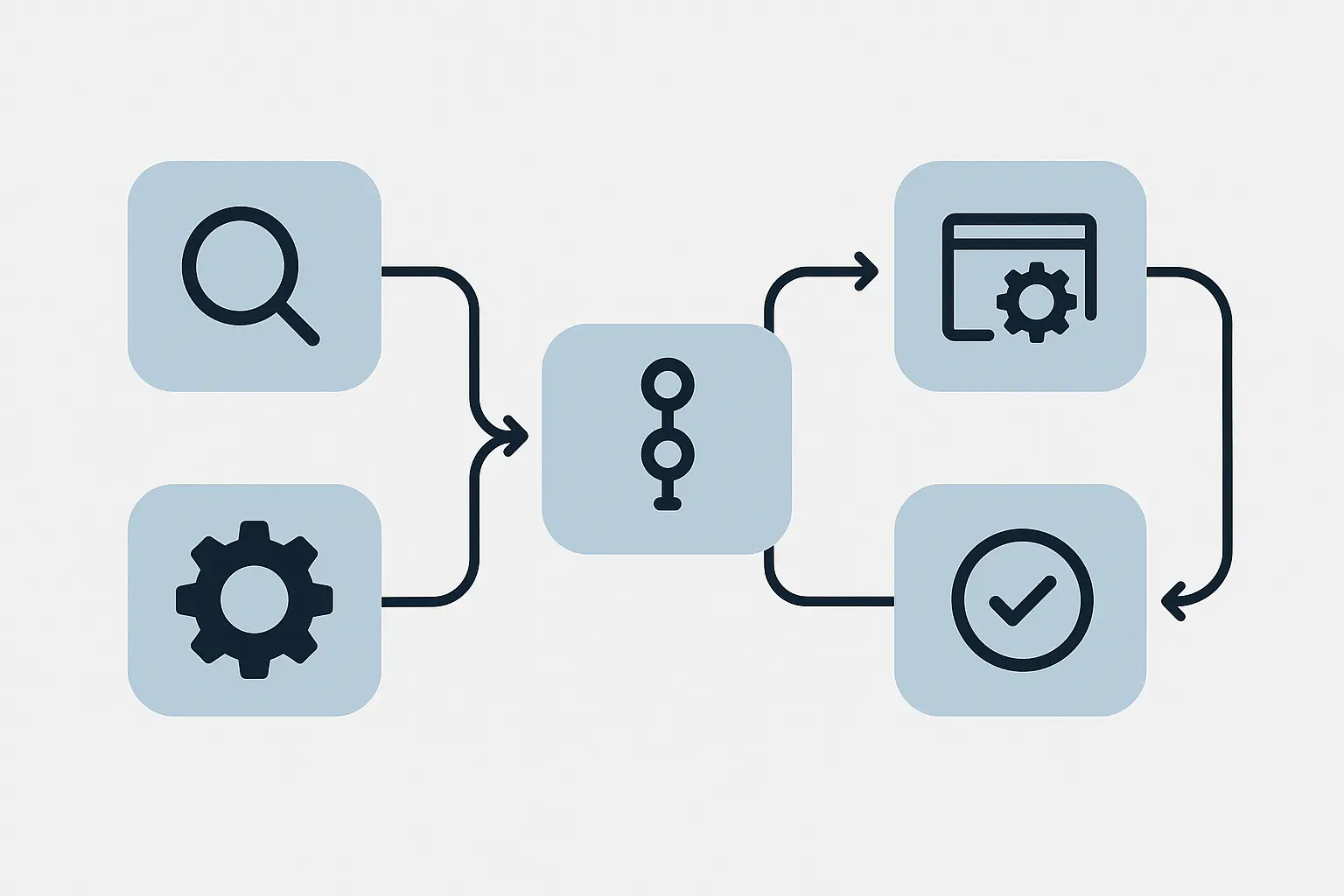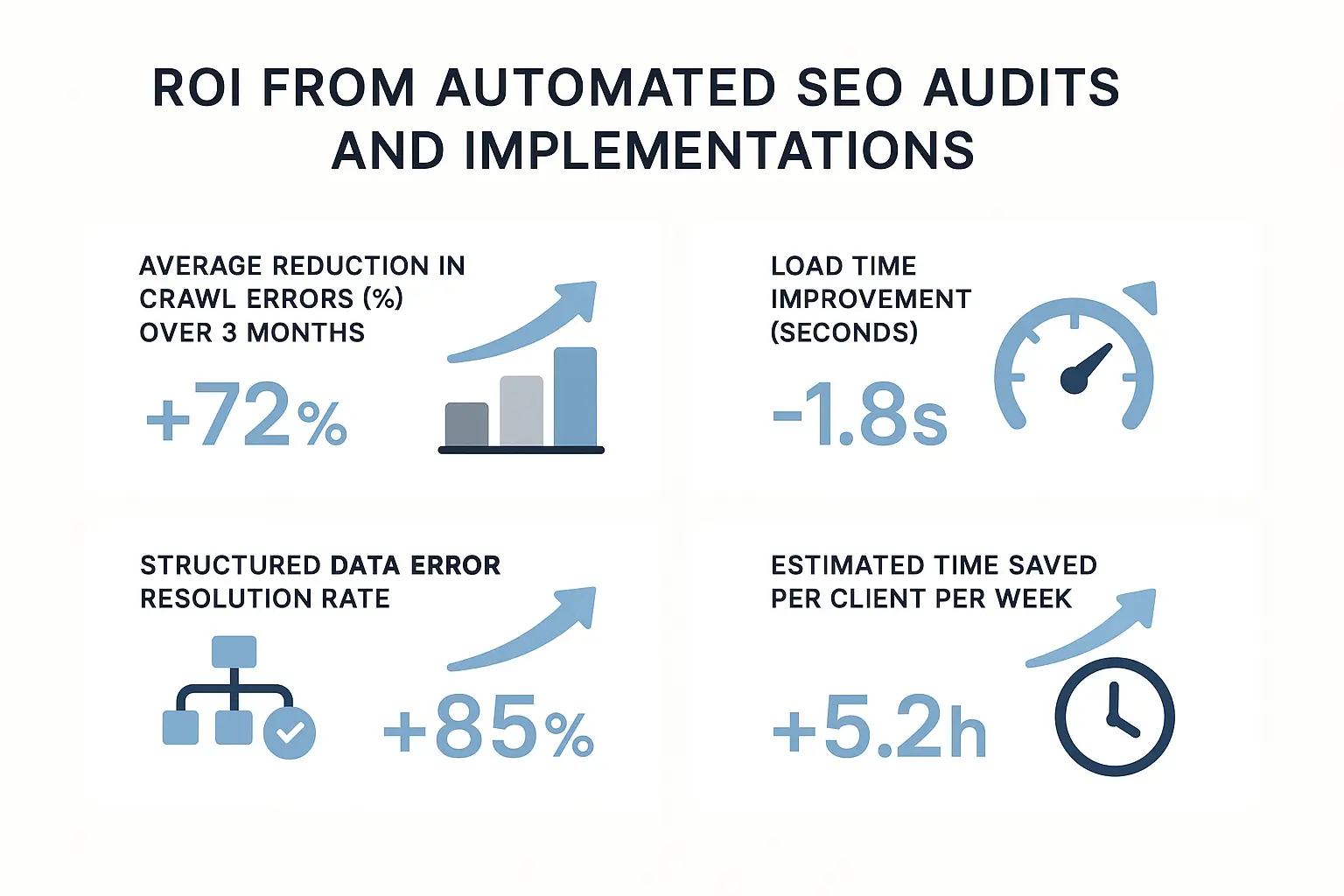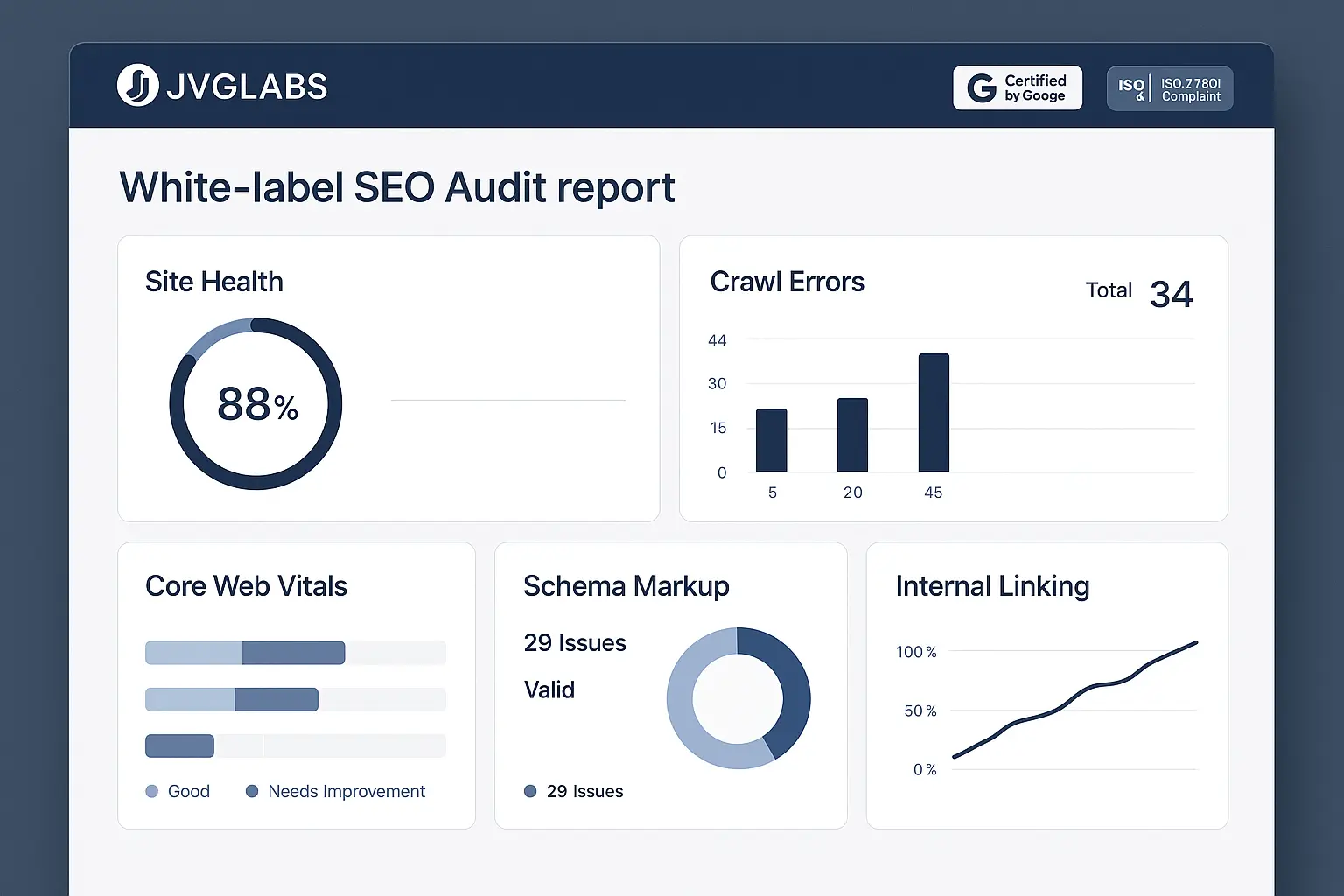Managing technical SEO for a single client is a full-time job. For ten, twenty, or fifty? That’s a recipe for burnout. Your team gets bogged down in endless crawl reports, schema validation, and Core Web Vitals fixes, leaving little time for the high-level strategy that actually moves the needle.
You know that pristine site health is the foundation of any successful campaign, but scaling that effort without tripling your headcount can feel impossible. This pressure is reflected market-wide: the SEO software industry is projected to hit over $265 billion by 2034, and the demand for efficient, scalable solutions is exploding.
This isn’t just about finding a better tool. It’s about building a system—an operational model that separates execution from strategy, allowing you to deliver enterprise-grade results for every client. This guide will show you how to move beyond the manual checklist and build a scalable technical SEO engine that drives both profitability and client retention.
Building Your Automated Audit Framework
Every great process starts with a comprehensive framework. While a manual checklist is a useful starting point, its real value for an agency lies in defining the scope of an automated system. A robust technical SEO program must continuously monitor several core pillars of site health.
As an agency, you’re not just looking for a tool that checks boxes. You need a solution that fits your workflow, scales across your client roster, and provides clear, actionable data.
Here are the critical areas your automated auditing system should cover:
Crawlability & Indexability
This is the absolute baseline. If search engines can’t find and understand a client’s content, nothing else matters.
Key Checks: robots.txt validation, XML sitemap health, crawl error detection (404s, 5xx server errors), redirect chain analysis, and canonical tag implementation.
Agency Challenge: Crawling dozens of client sites weekly is inefficient and prone to human error. An automated system can run on a set schedule, flagging only the critical anomalies that require strategic intervention.
Site Architecture & Internal Linking
A logical site structure guides both users and search engine crawlers, distributing authority and improving user experience.
Key Checks: Click depth analysis, identification of orphan pages, broken internal link detection, and logical URL structures.
Agency Challenge: Visualizing and optimizing site architecture across diverse client websites is an immense manual effort. Automation can map these structures and identify optimization opportunities at a glance.
Performance & Core Web Vitals (CWV)
Site speed is no longer just a technical metric—it’s a core component of user experience and a confirmed ranking factor.
Key Checks: Continuous monitoring of Largest Contentful Paint (LCP), First Input Delay (FID), and Cumulative Layout Shift (CLS) across key page templates.
Agency Challenge: CWV scores can fluctuate with any site update. An always-on monitoring system catches performance regressions before they impact rankings—a critical advantage that periodic manual checks simply can’t offer.
Schema & Structured Data
Proper schema markup helps search engines understand the context of content, leading to rich snippets and enhanced visibility in the SERPs.
Key Checks: Validation of existing structured data, identification of new opportunities (e.g., FAQ, HowTo, Product schema), and error detection.
Agency Challenge: Keeping schema correctly implemented and valid through CMS updates and site changes is a tedious, detail-oriented task perfectly suited for automation.

From Data to Strategy: Interpreting Your Audit
An audit report filled with hundreds of “errors” is useless without context. The real value your agency provides is translating raw data into a prioritized action plan that aligns with a client’s business goals.
Your process shouldn’t just find problems; it should connect technical fixes to business outcomes. For example:
Instead of: “We found 250 broken internal links.”
Try: “By fixing these broken links, we can reclaim lost link equity and improve crawl efficiency. This will help our new product pages rank higher and drive more qualified traffic.”
This shift in communication is critical. It transforms a technical cost center into a clear investment in growth. You’re not just fixing the website; you’re building a stronger foundation for every other marketing initiative.
Automating the Fix: From Diagnosis to Resolution
Identifying problems is only half the battle. The real bottleneck for agencies is implementation. This is where most off-the-shelf tools fall short: they tell you what’s wrong, but they don’t help you fix it at scale.
That’s the core difference between a tool and a system. A system uses automation not just for auditing, but for execution. By leveraging AI-powered SEO automation, agencies can handle up to 90% of traditional SEO tasks without manual intervention.
Consider a common issue: a client’s developer pushes an update that accidentally creates hundreds of new 404 errors.
The Manual Workflow:
- Wait for the weekly or monthly crawl to run.
- Export the list of 404s into a spreadsheet.
- Manually sort and identify the source of the errors.
- Create a ticket for the development team with instructions.
- Wait for the fix to be implemented.
- Re-crawl the site to verify the fix.
The Automated Workflow:
- An always-on monitor detects a spike in 404 errors within hours.
- The system automatically categorizes the errors by source, such as broken links from a specific page template.
- An automated rule generates a pre-formatted implementation brief with the exact redirect mapping needed.
- Your team simply reviews and approves the brief before it’s sent to the client.
This systematic approach transforms a multi-day reactive fire drill into a proactive, one-hour task—the key to maintaining quality control and profitability as you grow.

White-Labeling & Client Reporting: Presenting Your Value
As an agency, your brand is your most valuable asset. The tools and partners you use should enhance your reputation, not complicate it. When you rely on third-party tools for auditing, you often face a difficult choice: send a generic, unbranded report or spend hours manually recreating the data in your own template.
That’s why evaluating a solution’s reporting capabilities is so critical. The best partners operate on a white-label basis, ensuring all reports, deliverables, and communications are seamlessly branded as your own. This reinforces your agency’s authority and keeps the client relationship focused squarely on you.
A white-label dashboard allows you to:
- Maintain brand consistency: Every client touchpoint reflects your agency’s professionalism.
- Control the narrative: You present the data with your strategic insights, demonstrating your value beyond the raw numbers.
- Build client trust: Professional, data-driven reporting shows that you have a robust process for managing their investment.

JVGLABS: Your Agency’s Secret Weapon for Scalable SEO
The challenges of scaling technical SEO—from complex algorithms to budget constraints and lack of in-house expertise—are exactly why we built JVGLABS. We’re not another tool you have to manage; we are the system and the team that operates invisibly behind your brand.
We combine AI-powered automation with expert human oversight to manage the entire technical SEO lifecycle for your clients.
- We automate the audit: Our systems provide 24/7 monitoring of site health.
- We automate the fix: We handle up to 90% of implementation, from redirect mapping to schema generation.
- We operate under your brand: All reports and deliverables are 100% white-labeled.
This model allows your agency to scale SEO delivery profitably. You can confidently take on more clients, expand your service offerings, and focus your team on what they do best: building client relationships and developing winning strategies. We handle the execution.

FAQ for Agencies
How does an automated system compare to a premium tool like Semrush or Ahrefs?
Premium tools are excellent for data gathering and analysis, but they still require significant manual operation, interpretation, and implementation from your team. A solution like JVGLABS acts as an execution layer. We use powerful tools as part of our stack, but our value lies in the automated workflow and expert oversight that turns data into completed tasks, freeing up your team’s time.
Will automation replace the need for human SEO expertise?
Absolutely not. Research from sources like SEO Bot AI shows that automated tools can produce false positives and lack strategic context. That’s why our model is “automation with expertise.” AI handles the scale and repetition, while our human strategists provide the critical thinking, prioritization, and quality assurance that only an expert can. This combination is key to an effective omnichannel growth SEO strategy.
We’re not a specialized SEO agency. Can we still offer technical SEO?
Yes. We work with many web design, PPC, and full-service creative agencies that want to add SEO to their portfolio without the massive overhead of building an in-house team. We become your invisible, expert SEO department, allowing you to confidently offer a comprehensive new service under your brand.
How do we maintain control and visibility over the work being done?
As your white-label SEO partner, we provide complete transparency through a centralized dashboard. You see every task, track all progress, and approve all major strategic recommendations. You maintain full control over the client relationship; we simply provide the engine to get the work done.

